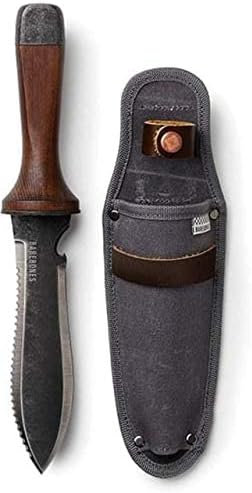Ideas that may or may not work. Tested in small areas.
The front border area is serving as a test area for clearing, planting and gathering seeds, and small areas in the woods are isolated designated testing areas. This allows mistakes in an area that isn’t critical. Below are experimental methods for which I could not find solid answers. I will try them and post results below each question–then move them to a forum for discussion:
- MULTI-FLORA ROSE: Tie Multi-Flora Rose around itself, and either allow to die, or spray as a bunch.
2024: Appears to work. Monitor for root seedlings over time.
Questions: Does the slowly dying bush send energy to the roots, and eventually spread? Must it be sprayed with herbicide as well? (Split-test 2 areas) - SEEDING: Plant 2x the amount of seed recommended in the testing/nursery/border area–where I am growing parent plants. Allow birds to snack lightly (dogs keep the visits short.) Watch woods to see if Native species seed are being spread. (We have local birds that don’t wander far. I have an ok from neighbors to check their areas too. This method may not be beneficial in urban settings.)
b. Eventually thin and transplant. Do these seedlings do well when transplanted? - DEER BROWSE MANAGEMENT: Guide deer to munch on Native species that rejuvenate by laying Honeysuckle branches in those areas during work. Those areas already tend to be the first they browse. If there are enough forbes and tree material to satisfy in those areas, will they continue to over-browse other areas? (We have a small group of resident deer who stay within the water borders, browse 2x daily, and a larger population only visiting about twice a year. The resident deer leave once they mature. The generational Does teach fawns to browse areas that I indicate with cuttings.)
- GLOVE METHOD (WIPE) HERBICIDE APPLICATION: Use cotton washcloth instead of cotton glove, with chemical gloves, when wiping herbicide on invasives. I did not like the feeling of having my hand wet with Round-Up, and don’t particularly trust the chemical gloves, as the Herbicide manufacturers add no recommendations to their MSDS.
- LILLY OF THE VALLEY – Compare 3 methods: Smother, Herbicide and trim to the ground for 3 consecutive years. The method that kills the roots best WINS.
b. Lily of the Valley did not respond to weaker dilution of Herbicide after weeks. A stronger dilution was used as spot treatment. Will this affect other species in that area? - GARLIC MUSTARD: while pulling blooms, in some areas I am lightly scraping the top of the soil around them and picking up the seedlings. Then I place the soil back. Will this lessen seedlings over 1 year, 5 years, before the seed bed is fairly clear?
Note: (The soil is organic and damp, (Histosol?) so gently scraping the topsoil only pulls out the seedlings, and they come out to the bottom of the root.
Split test: Dispose of seedlings Alternate: leave seedlings to wither.) - MORROWS AND AMUR HONEYSUCKLE: Remove honeysuckle on rivers edge by cutting and brushing with herbicide, leaving the roots. This was recommended my our CISMA. With high waters this year, I would like to see if this is adequate to aid erosion, or if I should plant forbs and grass 2 years before clearing dense invasives from the shoreline.
- HERBICIDE COVERAGE: I am using only spot treatment, not broad application. Will this be adequate? Will enough of the invasives die over a period of several years?
- SEED BED: Will turning the soil below the top soil in this area bring up the Native seed bed?
b. (Would only work in an area that was pristine a short time ago. Or will it bury invasives and allow them to come back much later? Tried this on a very small area to avoid damage. The deeper soil is also rich in this area. - SMOTHERING METHOD: Does laying leaf litter on top of smothering cloths improve results?
RESULT 2024: YES!
b. Should the leaf litter be placed back on the soil, or does it carry invasive seeds?
Appears not to be the case, after 2 years. - GRASSES (INVASIVE) : Kill with herbicide, then plant plugs in spaces between dead roots. QUESTION: Does this result in Native species growing and grass roots decomposing faster?
- SEEDING SOURCE: Do seeds sown from my nursery areas (border) grow better than purchased seed? Test areas: berm and entry to pathway.
- MECHANICAL GRASS SEED SPREAD: Does lawn tractor cause grass to grow when driven into woods?
Result: YES. Determined: 2024. Mainly appearing where lawn tractor was parked for some time.
SOLUTION: Placed hose extension at the beginning of the path and spray down tires before entering woods. - CANARY REED GRASS SHADING-OUT: Will River Birch, Paw Paw and Buttonbush shade out Canary Reed Grass? Do I need 2 layers? (Canopy and brush?)
- GENERAL SHADING-OUT: Are spring ephemerals effective at shading out invasives? Or do they recur as normal after ephemerals fade?
Question: what to plant in those areas to allow sun for ephemerals, but also protect from new invasive seeding and generation? Possible solution: late spring emergent species?







